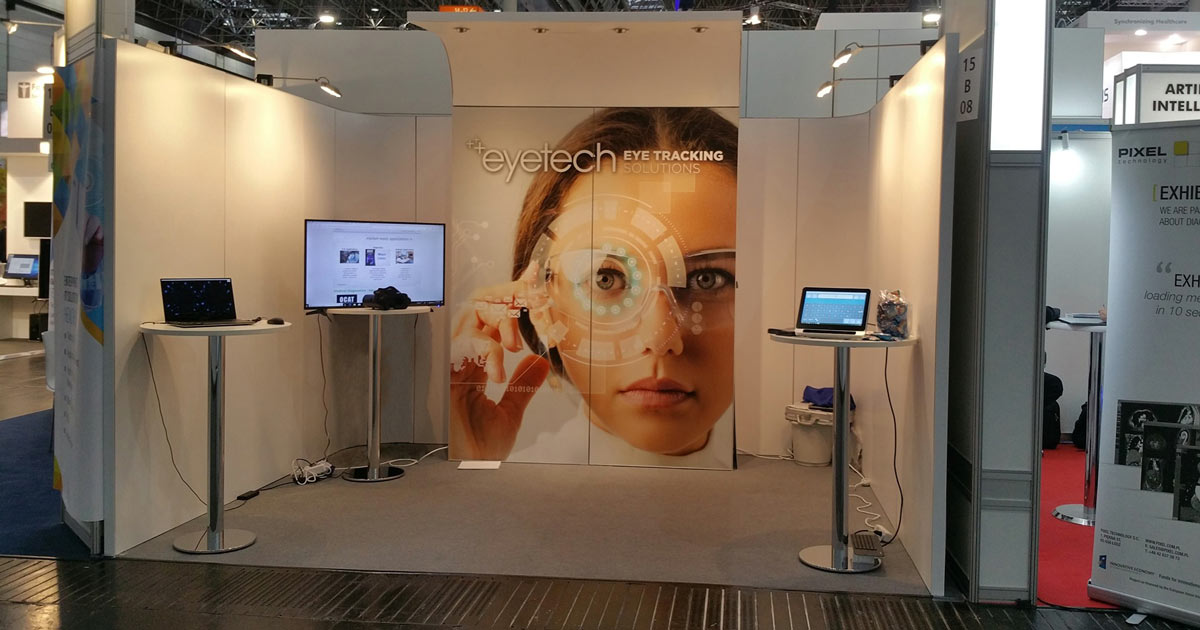What powers possibility? In the world of eye-tracking, there is one answer—EyeOn. The future of Augmentative and Alternative Communication (AAC) devices just got brighter thanks to the latest all-inclusive tablet from EyeTech Digital Systems. The EyeOn 2.0 device combines portability with hands-free capabilities powered by embedded precision eye-tracking technology, all backed by 24/7 end user support.
For individuals with physical or communication challenges, EyeOn opens up a whole new word of possibilities. The American Speech-Language-Hearing Association (ASHA) estimates that well over 2 million people with significant expressive language impairment use AAC devices to aid communication. This includes individuals with conditions such as cerebral palsy, autism, ALS, muscular dystrophy, traumatic brain and spinal cord injuries, and Rett syndrome. Until now, many AAC devices proved to be more of a burden than a help—heavy, bulky, and overly delicate with slow performance, frustrating crashes, short battery life, and confusing set up.
The FDA-registered EyeOn device delivers unprecedented accuracy and reliability, amplified sound, and up to ten hours of battery life. With EyeOn, users can perform common, everyday tasks that many take for granted, such as controlling their environment or browsing the Internet—all with the power of their eyes. The intuitive technology uses proprietary AI algorithms to produce extreme stability and reliability, capturing and translating the user’s eye movements into precise mouse control. All eye tracking is processed on a dedicated Field-Programable Gate Array (FPGA) chip that can be tuned and dynamically adapted to each user for optimal performance.
“We designed the EyeOn platform for individuals who primarily use eye gaze to control their AAC devices, using our proprietary AEye 2.0™ technology for a beautifully compact, highly portable, tablet speech-generating device,” said Robert Chappell, Founder and Chief Science Officer of EyeTech. “To me, powering new possibilities really means that we’re just scratching the surface at this point to the uses cases for EyeOn and eye tracking, and there’s so much more that can be done.”
While EyeTech’s eye-tracking solutions have predominantly served the AAC device needs of end users to date, the all-inclusive EyeOn tablet is also enabling innovation in the field of medicine. The same features and functionality that support the speech-generating needs of severely handicapped individuals is also leveraged to give a voice to nonverbal or physically impaired patients in critical care settings. The EyeOn has enabled ICU patients who are intubated due to COVID-19 to effectively communicate with their care teams and loved ones.
Beyond serving as a communication aid, EyeOn’s cutting edge eye-tracking technology and software solutions also support medical research endeavors. Researchers can use the EyeOn platform to capture eye-tracking data to support cognitive and vision health screenings for patients. With more than 50 percent of the brain involved with visual processing, things like brain injury, disease, and cognitive impairment almost always show up in eye movements. Today, EyeOn is being used to support non-invasive assessments for conditions such as mild cognitive impairment (MCI), a precursor to Alzheimer’s Disease, and other neurological disorders. EyeOn offers a simple avenue to diagnose a variety of patient conditions, from autism to Parkinson’s Disease, earlier by measuring how fast the eyes move, track, and focus.
From bringing greater independence and equity to AAC device users to fostering advancements in the field of medical diagnostics, EyeOn is on the leading edge of innovation in eye-tracking. To learn more about EyeOn and to see it in action for yourself, request a demo today.



